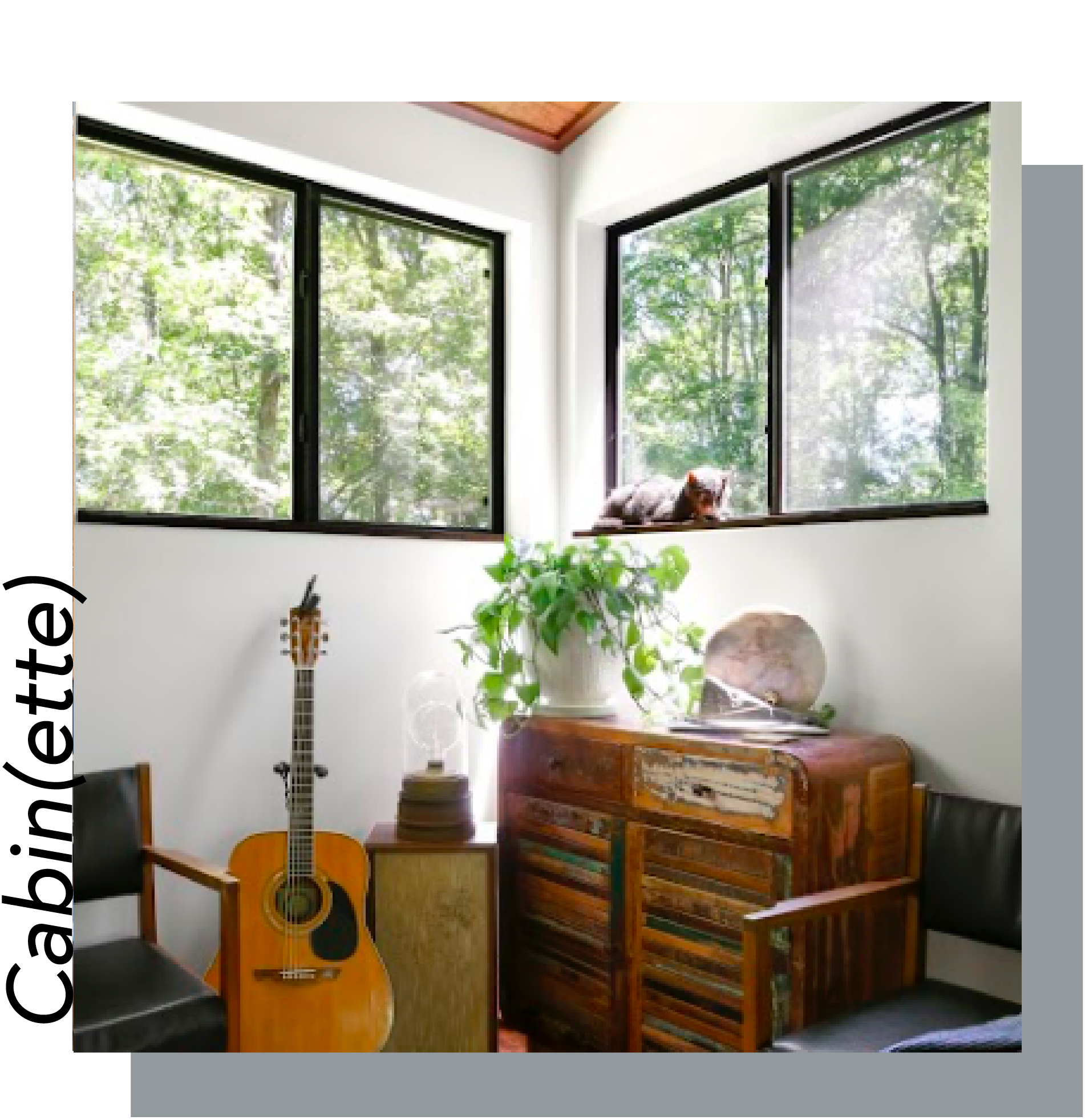10 Sustainable Home Design Ideas
If you’re ready to create a home that is healthy for your family and the Earth, we have 10 sustainable home design ideas to get you started. When creating a sustainable home, you have to consider many things, from indoor air quality to deforestation and social equity. Once you dive in, the sheer volume of information can be overwhelming.
This is why working with a sustainable designer is key when planning your next project. Until then, check out our list of sustainable home design ideas for an organized, streamlined start to your project.
Sustainable Home Construction
1. Create a Sealed Building Envelope
Choosing quality materials for windows and insulation is essential to creating the “sealed envelope” in your home. This will ensure that your home stays warmer in the winter and cooler in the summer - your choices determine the amount of heat transfer between the interior and exterior of your home. If you’re in the construction phase, opt for high-quality insulation and insulate any outlets on an exterior wall in older homes.
Additionally, older windows should be properly restored, insulated, and maintained when possible and should be replaced only when unsalvageable, or if wooden - when rotted or decaying.
If you have single pane windows, companies like Solar Insulation can install a wide variety of window films with “low-e” insulative properties, among other options like break-in deterrent and UV-filtering (which can protect your flooring, artwork and furnishings investments).
2. Water
With water being one of our most precious resources, we must do all we can to protect it. From updating older leaky pipes to installing a greywater system that allows you to repurpose water before it’s sent off to be cleaned, there is so much opportunity for sustainable water usage during the construction process.
For a less invasive solution, make sure to install low-flow shower heads and faucets and update appliances to HE (high efficiency) models.
3. Energy
Sure, we would all love to make the leap to solar or wind, but for many, it’s often a costly change. So, when it comes to energy in your home, make sure you are optimized to take advantage of passive energy solutions. This includes natural daylighting, thermal mass flooring, and using passive ventilation when possible, such as opening windows for a cross breeze and bringing in that fresh air.
When it comes to solar, start small and you can actually triple your sustainability impact. Elevate your home’s facade and entry path with solar landscape Lighting that is also dark-sky-compliant. By keeping light levels reasonably low and choosing a warm color temperature (around 2700K or less on the box), you’ll avoid interrupting the circadian rhythms of: yourself, your loved ones, and nature around you.
Tip: e3 Innovate (Nashville) is an example of a company that can provide an on-site energy assessment for your home and recommendations for where to invest first for the most impact and improvement on your energy usage. There are even tax credits available in some areas for these improvements, so check with your local municipalities for additional information.
Sustainable Furnishings & Decor
4. Choose No-VOC Paint & Coatings
Ensure that the paint, coatings, and varnishes used on the walls of your home are low VOC. This step is crucial for indoor air quality and the environment as the production of low-VOC finishes is gentler on the environment.
Tip: Look for a Greenguard or other eco-label on the can.
5. Sourcing Non-Toxic Furnishings & Materials
Non-toxic furnishings and materials are among the best ways to create a sustainable home, from the mattress you sleep on to the carpet where your kids build block castles. Be on the lookout for hidden toxins within the adhesives and finishes—many manufacturers use water-based, eco-friendly alternatives. Look for finishes made from natural fibers and materials, for example, wool rugs for your floors and linen sheets for your bed.
Additionally, if possible, you’ll want to consider shopping locally for American-made furniture. Shopping antique or estate sales is another way to find great, timeless pieces, bring unique character to your home, and have a lower impact on the environment. Chairish is a fantastic site for finding unique vintage design pieces, including furniture - you can also make an offer or filter by location to source local and reduce shipping.
6. Partner With Local Craftsmen & Artisans
Your local craftsmen and artisans are every designer’s secret weapon in sustainable home design. Sourcing art locally and commissioning one-of-a-kind pieces are fantastic ways to bring bespoke pieces into your home while avoiding many harmful practices that come with mass production entirely.
A good rule of thumb is: if it’s made slowly and you know the face of the creator, what you bring into your home will be much more sustainably made than anything you purchase at a big box store.
7. Window Treatments
Window treatments are not only a great way to beautifully frame your views to nature and add a layer of insulation and security, but they also provide you with a barrier to sound pollution. They can provide a layer of soundproofing for those who live in busy neighborhoods or urban areas.
Tip: On street-facing windows in living areas, I love top-down, bottom-up Roman shades for flexibility of both light and privacy.
Plan for a Sustainable & Eco-Friendly Lifestyle
8. Organization
At MOTIV, some of the questions we are asked the most are about organization. Living in a clutter-free and well-organized environment is one of the best ways to set yourself up for an eco-friendly lifestyle.
First, when you clarify your physical environment, a calmer state of mind follows. A common mistake among clients and D.I.Y.ers is to have several small, mismatched storage solutions competing for real estate in one room. Instead, curate a few larger pieces that play nicely together, offer both style + concealment, or can even serve as a focal point if desired.
Second, when you reduce the clutter in your home, you also reduce the amount of stress in your home and create space for new abundance. Start with a quick (10-20m) daily DECLUTTERING routine — your soul will enjoy having more space to recharge and expand.
9. Eliminate Toxins From Your Home
When you eliminate toxins from your home, you create a sustainable space for your family and implement practices that are beneficial to the environment. From the cleaning products under your sink to the light pollution caused by the wrong bulb in your lamp, it’s important to eliminate the toxins in your home.
While we have briefly touched on a few ways you can do that, I have created a free PDF on how you can create a toxin-free home in 10 easy steps. Sign up to get your copy of 10 Easy Steps To Remove Toxins From Your Home today, and we’ll walk you through the process of clearing the toxins from your home and provide you with our favorite safe alternatives.
10. Balance the Energy in Your Home With Feng Shui
With the foundational elements dating back over 3,500 years, feng shui is an ancient Chinese art of arranging buildings, objects, and space. The goal is to create a flow of energy that promotes harmony and balance.
When approaching your home, you want to have a balance of yin (feminine energy) and yang (masculine energy). You also want to bring a balance of the five elements into your home: fire, earth, metal, water, and wood.
When your home’s energy is balanced and has excellent flow, you have a great sense of peace and connection to nature, yourself, and others.
Keep in mind that sustainable design is a multi-layered approach. Many designers have gone through multiple certifications to master the nuances. Remember to download our free guide, 10 Easy Steps To Eliminating Toxins From Your Home. It’s a great first step in creating the sustainable lifestyle that you’re after.
If you’re ready for more, please check out our range of service offerings. From full-service design options to virtual consultations, we have a design solution that’s perfect for you.














